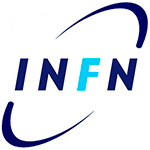Chair-Professor Vincenzo Tamma
Multiphoton Interference: from the physics to the ultimate quantum technological advantage
Quantum interference is one of the most intriguing phenomena in quantum physics at the very heart of the development of quantum technology in the current quantum industry era. It underpins fundamental tests of the quantum mechanical nature of our universe as well as applications in quantum computing, quantum sensing and quantum communication. I will focus on some of our recent results demonstrating the ultimate quantum sensitivity in the estimation of physical parameters by exploiting multiphoton interference with experimentally feasible single photon sources. I will first give an overview of multiphoton sensing techniques saturating the quantum Cramér-Rao bound based on sampling measurements which resolve the inner degrees of freedom, such as time, frequency, position, and polarization, of single photons interfering at a beam splitter [1,2]. This includes estimation of the transverse position of a given source for applications in super-resolved single-molecule localization microscopy, by circumventing the requirements in standard direct imaging of camera resolution at the diffraction limit, and of highly magnifying objectives [1]; imaging of nanostructures, including biological samples, and nanomaterial surfaces, with arbitrary values of thickness through estimation of photonic time delays [2]. Finally, we have shown how multiphoton interference is a powerful tool to achieve fluorescence lifetime measurements of 0.1 picosecond timescale with applications in contact-free nanorheology and the study of fast biological processes [3]. Finally, I will also describe how the metrological power of multiphoton quantum interference is intimately connected with an exponential speed-up in quantum optical networks, particularly in the development of scalable boson sampling experiments with “real world” nonidentical single photons [4,5]. This research opens a new paradigm based on the interface between the physics of quantum interference, quantum sensing and quantum exponential speed-up with experimentally feasible “real world” photonic sources. [1] D. Triggiani and V. Tamma, Phys. Rev. Lett. 132, 180802 (2024) [2] D. Triggiani, G. Psaroudis, V. Tamma, Phys. Rev. Applied 19, 044068 (2023) [3] A. Lyons et al., Nature Communications 14, 8005 (2023) [4] V. Tamma and S. Laibacher, Eur. Phys. J. Plus 138, 335 (2023), V. Tamma and S. Laibacher, Phys. Rev. A 104, 032204 (2021); S. Laibacher and V. Tamma, Phys. Rev. A 98, 053829 (2018); V. Tamma and S. Laibacher, Phys. Rev. Lett. 114, 243601 (2015); S. Laibacher and V. Tamma, Phys. Rev. Lett. 115, 243605 (2015) [5] X.-J. Wang et al., Phys. Rev. Lett. 121, 080501 (2018); V. V. Orre, et al. Phys. Rev. Lett. 123, 123603 (2019)





